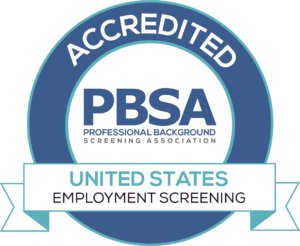Major ingredients of an efficient Vetting Process for Employment
The vetting process for employment refers to a pre-employment screening procedure for those who don’t know.
Hiring employees without effectively vetting them first might save you some time initially, but in the long run, it could cost you a lot of heartaches. If the vetting process for employees at your organization is lacking, it means you are more likely to hire people who are not fit for their job roles.

To make sure you hire candidates who are a good fit with their positions, their teams, and your organization, your vetting process needs to be meticulous. In this post, you will learn:
- What a thorough vetting process looks like
- How to vet applicants during the interview process
- How to vet new hires before they officially join your company
What is the Vetting Process?
Recruiting and hiring employees is a time-consuming and expensive process. According to Glassdoor, the average company in the United States takes up to 52 days to fill a position while spending about $4,000 to make a hire.
To top it off, it can be difficult to determine which candidates are most qualified to succeed at your organization in the long term.
This is why an astute vetting process is so crucial.
Business organizations use a vetting process to assess a candidate’s qualifications and background, eliminating unqualified contenders from the pool of job applicants. A vetting process will help you save time, money, and a lot of heartaches by making sure you reduce the amount of in-person interviews you conduct.
A thorough vetting process can include things like:
- Sending candidates follow-up questions to answer
- Conducting background checks
- Initial video interviews
The vetting process also depends on the type of role you are hiring and the size of your company. However, you should always include a few basic elements discussed below.
Different Steps in the Employment Vetting Process
To have an efficient and unbiased hiring process, you can implement the following strategies in your employee vetting process.
Write an accurate job description.
If you take the time to write a precise job description, your vetting process will be much easier from start to finish. For example, if you are hiring for a sales role, you can write that you are looking for someone with a “customer-first mindset.”
Also, don’t forget to create your description in a way that attracts a wide pool of diverse candidates because diverse teams have proven to perform better.
Your job description must be designed to allow you to correctly recognize qualified candidates from the beginning while also attracting the widest pool of candidates possible.
Use software or matrix to review the applications
The point of a vetting process is to allow you to filter out applicants who do not have the right skills to excel in their roles. It would help if you started by vetting the applicant’s cover letter, resume, and other materials they may have submitted.
We recommend using a hiring matrix that will automatically weed out candidates who are not a good fit for your company.
Conduct a video interview before a phone interview
Use video interviews as a way to entice candidates to answer your questions quickly, especially if it’s a high-volume role. The video interviews can act as a qualified prerequisite for whether or not the applicant is eligible to move forward with a phone interview.
Use other assessment tools to evaluate the candidates
Consider offering initial assessments to determine whether the applicant will succeed in the role. For example, if you are hiring for a sales role, you may offer role plays to see if the candidate has the necessary skills to interact with a customer desirably.
Similarly, you can give out coding assessments for software or engineering roles or case studies for functional positions.
Be consistent with the vetting process.
A vetting process is only effective if it is replicable and consistent. It is about establishing a process at the start and then sticking with it. From assessment tools to background checks, make sure you remain consistent in every step of the process.
For example, it is crucial your team uses the same background check for each prospective candidate and doesn’t need extra information applicable to the role.
Commonly asked questions about the Vetting process for employment
Now that you know what goes into vetting the candidates, you might want to look at the most common questions about the vetting process.
How long does a vetting process take?
It can take anywhere from a few seconds to a few months, depending on the role or position you are seeking. Each case is different, and it comes with a different set of requirements for research and documentation. Ultimately it depends on what information you are looking for and what you find during the process.
For instance, if you require a certified copy of the applicant’s college transcripts, it can take up to 10 days or more to get it.
And if any questionable information comes up during the background check, the vetting process can stretch even longer.
However, if your vetting process only includes asking a few technical questions about the role, it can be done within 24-48 hours.
What is checked during vetting?
Vetting an employee can include finding out information regarding:
- Professional license and certifications
- Credit references and history
- Prior convictions or jail time
- Employment history
If you hire a professional background checking company, they will also look for potential red flags that could show whether the candidate will become an effective and reliable employee or prove to be inefficient at performing their duties.
What is CV/Resume vetting?
Almost every hiring manager knows someone who has lied on their resume. The purpose of resume or CV vetting is to ensure you do not hire a candidate who has provided false information about their education credentials, professional licenses, background, previous job titles, reasons for leaving, etc.
If the candidate has lied about their skills or given you a fake job reference, it will all show up during the resume vetting process.
Order a background check on yourself to prepare early for CV/Resume Vetting!
No matter how skilled and likable the candidate seems, it would help if you were sure you had performed due diligence during the vetting process before they sign an employment contract with you. Answering the following questions will help you hire a candidate who is qualified for the job:
- Has the applicant passed background checks?
- Have you verified that the applicant holds all relevant and valid certifications required to do their job?
- Have you contacted the applicant’s references to confirm the details of their job history?
Having a thorough employee vetting process in place will help you identify the top candidates in your industry and ensure they stay with your company for years to come











